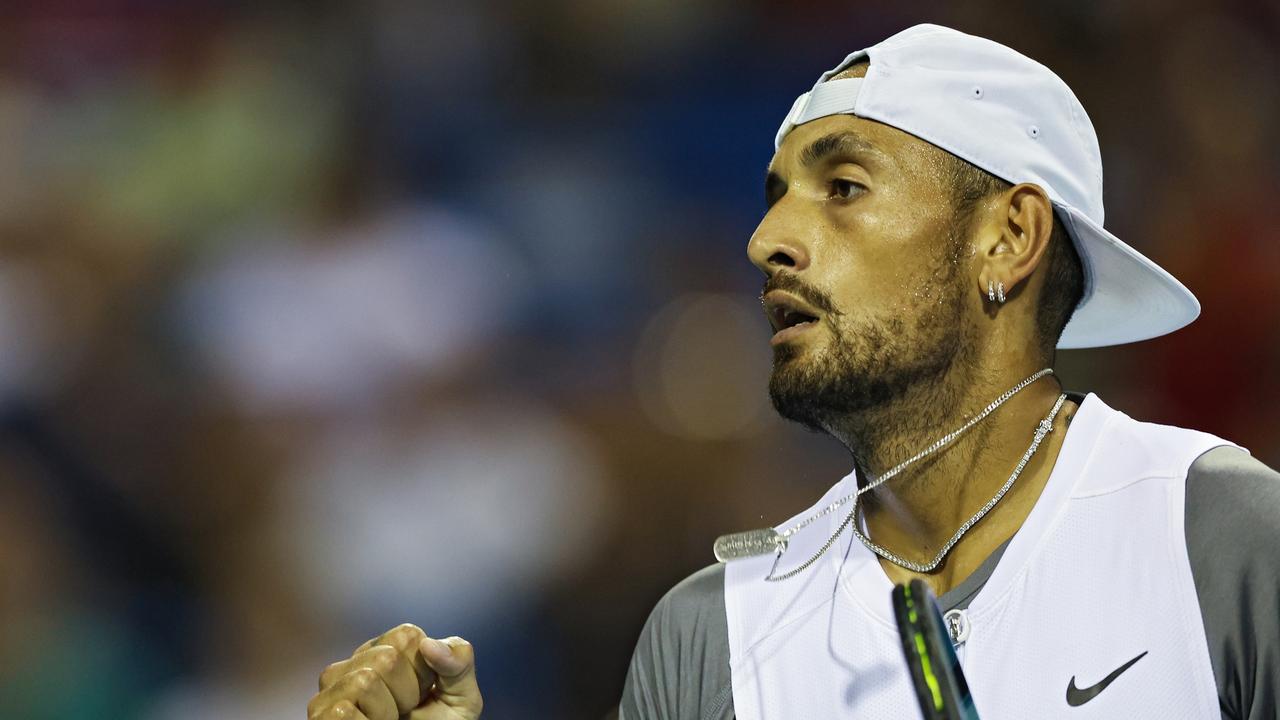Wimbledon runner-up Nick Kyrgios, seeking his first title in three years, advanced to the men’s final at the ATP and WTA Washington Open with a tight victory over Sweden’s Mikael Ymer.
Australia’s 63rd-ranked Kyrgios edged 115th-ranked Ymer 7-6 (7/4), 6-3 and will play for the crown Sunday against the later winner between top seed Andrey Rublev and Japan’s 96th-ranked Yoshihito Nishioka.
Kyrgios, who won the most recent of his six ATP titles at Washington in 2019, has a 2-1 career mark against Rublev and a 3-0 record against Nishioka.
Watch Tennis Live with beIN SPORTS on Kayo. Live Coverage of ATP + WTA Tour Tournaments including Every Finals Match. New to Kayo? Start your free trial now >

“I didn’t get to sleep until 4.50am, I just had so much adrenaline after (the Tiafoe win),” Kyrgios said.
“I got some treatment and my body was just so sore after last night. It was an epic battle.
“I didn’t really do much today but I felt like my energy was a little flat early on today and it’s understandable, I’m only human.
“My adrenaline for the final is going to be right there and I’m super excited for it. I’ve got doubles tonight, work on my returns a little bit. I returned pretty poorly tonight I’m not going to lie, so hopefully I can turn it up a little tonight.”
Kyrgios then backed it up to book a spot in the final doubles shortly after alongside American Jack Sock, making it two victories in the space of around five hours.
Estonia’s Kaia Kanepi, trying to end a nine-year WTA title drought at age 37, and 60th-ranked Liudmila Samsonova will meet in the women’s final at the US Open tuneup.
World number 37 Kanepi eliminated Australia’s Daria Saville 6-3, 6-1 in 73 minutes while Samsonova routed China’s Wang Xiyu 6-1, 6-1 in 67 minutes.
Kyrgios won the last three points in the first-set tiebreaker, Ymer sending a forehand long to end an intense rally before Kyrgios added a service winner and overhead smash.
Ymer, who lost his only ATP final last August in Winston-Salem, botched a forehand volley in the third game of the second set to miss a chance to grab a break point.
Kyrgios earned the first break points of the match in the eighth game and took advantage on his third chance with a passing forehand winner to break for a 5-3 edge, then held to claim the match after 94 minutes on his 10th ace.
The Aussie fired 28 winners with only 15 unforced errors and dropped only four points on his second serve.
Rublev seeks his 12th career crown and fourth title of the season after Marseille, Dubai and Belgrade, hoping to match Spaniards Rafael Nadal and Carlos Alcaraz for the most ATP trophies this year.
Nishioka, in his first ATP semi-final since 2020 at Delray Beach, won his only ATP title in 2018 at Shenzhen.
Nishioka and Rublev split two prior meetings, Nishioka winning at Sydney in 2019 and Rublev at last year’s ATP Cup.
Kanepi seeks her fifth career WTA title but her first since the 2013 Brussels Open. She won her only WTA hardcourt title at Brisbane in 2012.
Into her first WTA final since a 2021 Australian Open tuneup at Melbourne, Kanepi dominated Saville’s first WTA semi-final since 2018 at Acapulco.
“I played my best match,” Kanepi said. “Everything was very smooth for me. I hit a lot of lines.”
Kanepi reached her first Grand Slam quarter-final since 2017 at this year’s Australian Open and credited that for a confidence boost crucial to her success this year.
“It was amazing,” she said. “I never thought I would make quarters in Australia. I thought it’s not just my place. But I played really well, and then I continued playing well. I didn’t actually put any pressure on myself to achieve something special.”
Samsonova, 23, won her only meeting with Kanepi in last year’s first round at Wimbledon. Samsonova is into her first WTA hardcourt final, having won her only prior tour final at last year’s German Open.
.






















